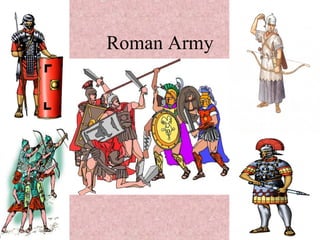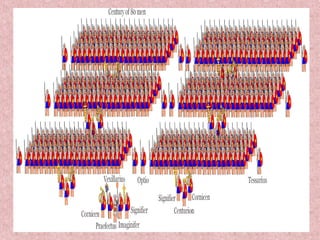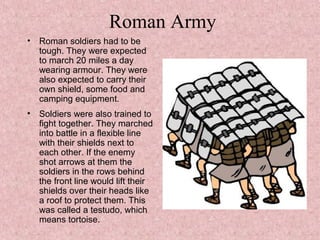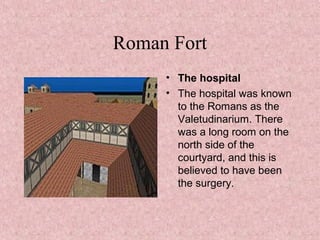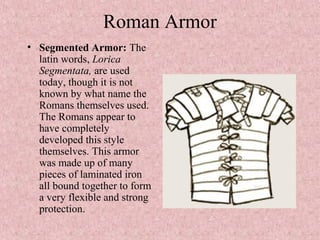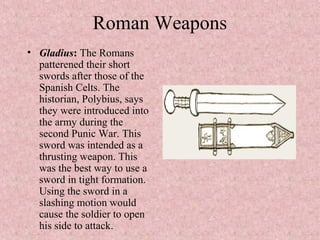The Roman Army was made up of professional soldiers from across the Roman Empire who served for at least 25 years. Soldiers of higher ranks like centurions led groups of 80 ordinary soldiers. Centurions could punish disobedient soldiers with sticks. Roman soldiers underwent rigorous training and were expected to march long distances in armor while carrying their equipment. They fought in tight battle formations using coordinated shield tactics.
